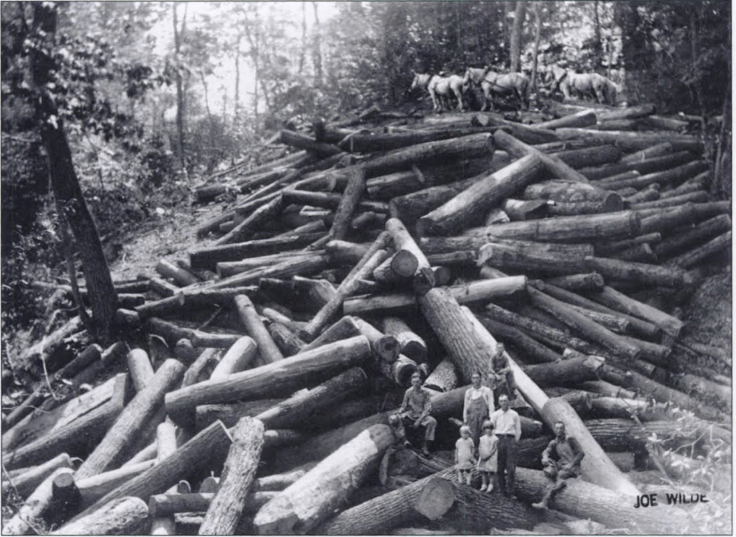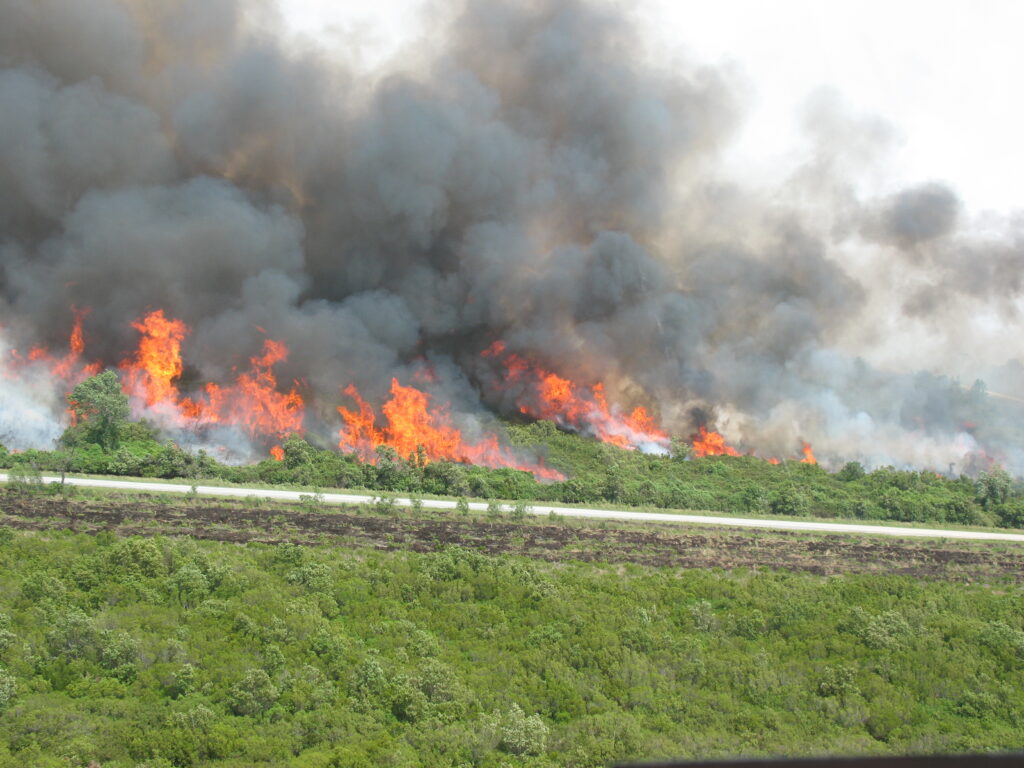Fire History
Fire has long been a part of North Carolina’s environment. Researchers have found charcoal preserved in peat bogs, providing evidence of historical wildfires dating back hundreds of years. We also know that Native Americans practiced controlled burning, often setting fire to their fields after harvest to return nutrients to the soil. This was adopted by European settlers, and prescribed fire has been used across our landscape for the most part since then.
However, the late 1800s brought a change in forest management practices that shaped the state of fire in North Carolina for the next half-century. Clear-cutting for timber became common, and it changed the fuel structure of our forests. In place of the well-established and fire-adapted trees, younger and small-diameter fuels grew lower to the ground. These could dry out more quickly and cause fire to spread more easily, which led to concerns that wildfires would be dangerous and destructive for forests. As a result, fire exclusion was deemed necessary for forests to regenerate.

By the 1930s, farmers and private landowners still saw benefits to routine burning, but prescribed fire had largely stopped on federal lands, coinciding with the launch of Smokey the Bear as a public warning about the danger of forest fires. Because of the (un)managed state of many forests, though, fires became inevitable, and during droughts in the 1940s and 1950s, North Carolina saw its largest wildfires on record, including the 203,000-acre Lake Phelps fire in 1955 that burned for weeks in remote expanses of organic soils at the coast.
Those big wildfire events, along with the advancing state of fire science, saw shifting attitudes and practices. Prescribed fire was found to be beneficial and even necessary for longleaf pine regeneration, ecosystem maintenance, wildfire prevention, and returning nutrients to the soil — just as Native Americans discovered hundreds of years ago.
Modern management practices include more widespread prescribed burning by state and federal agencies and private landowners, forest thinning, creating fire breaks adjacent to large tracks of forested land, and promoting firewise communities — a critical element to protecting homes and neighborhoods, given that North Carolina has more acreage in the wildland-urban interface than any other state.

Of course, wildfires are still a part of our environment, especially during drought events. During the multi-year drought in 2007-08, a lack of wintertime moisture recharge led to an early onset of the spring fire season in 2008 and several large fires including the Evans Road event at the coat. In 2011, a similarly dry winter and spring primed the landscape for several lightning-caused fires at the southern and central coast. The Mountains had a particularly active fall fire season in 2016 driven by a persistent hot, dry pattern and exacerbated by fuel loading as leaves fell and vegetation dried out.
While these fires have all had impacts including damaging homes and property, releasing large amounts of smoke, and burning hundreds or thousands of acres, the overall acreage burned by wildfires across the state has continued to trend downward thanks to proactive management practices, more extensive prescribed burning, and some recently wet and drought-free years.